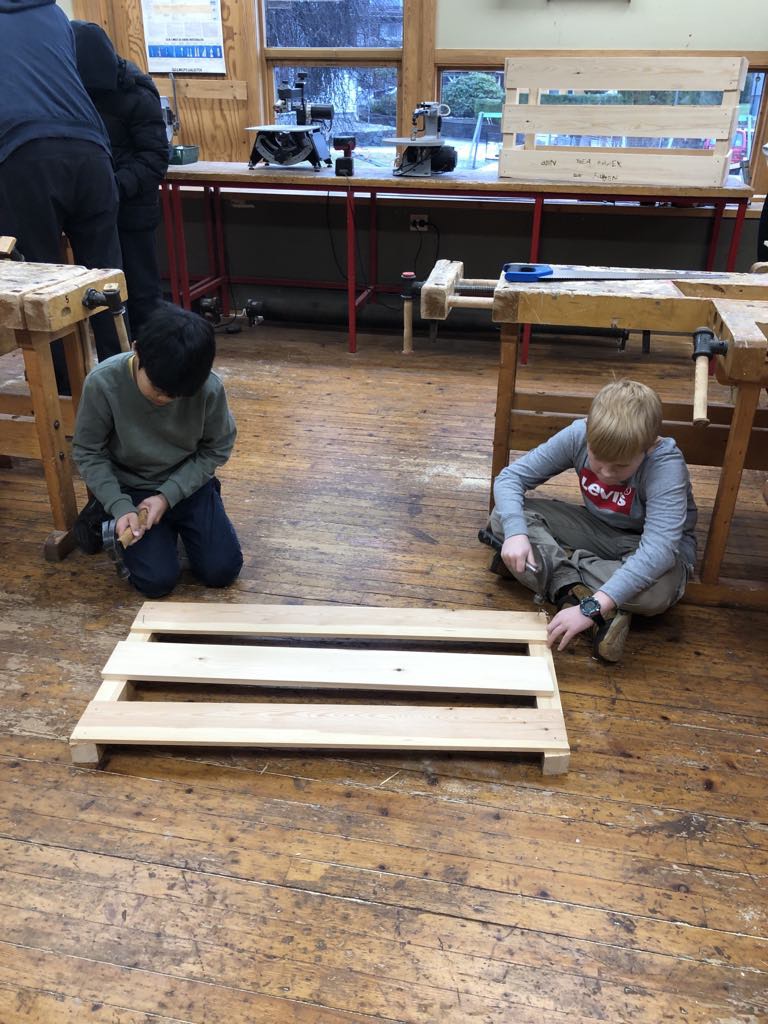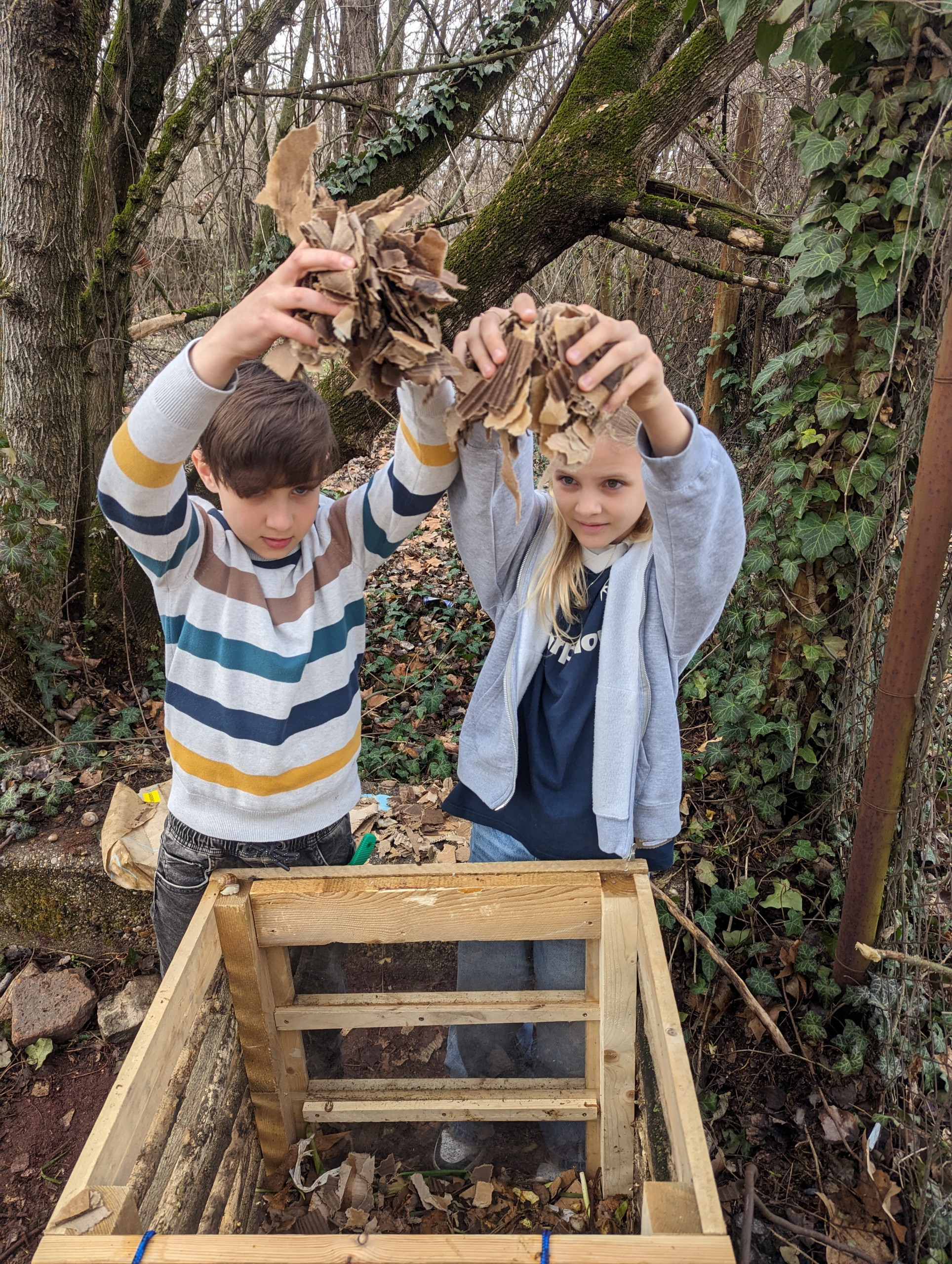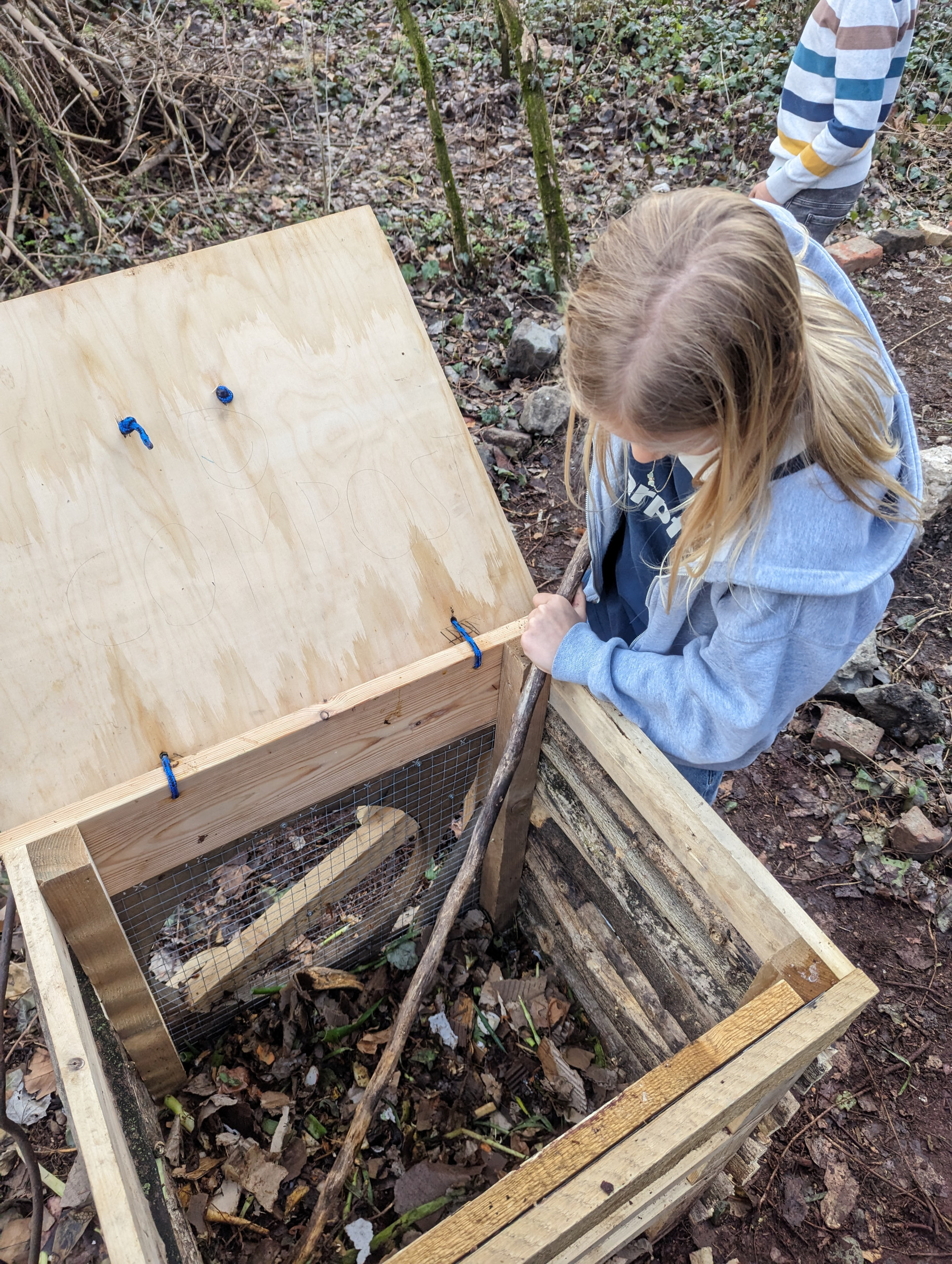Why use this tool?
Healthy ecosystems require healthy soils. The latter contribute to sequestering carbon, and absorbing water which limits risks of flooding and helps refill aquifers. Soil biodiversity also helps sustain the biodiversity of the ecosystems at large, and makes food more nutrient-rich which is essential to human physical and mental health. Besides, connecting with soil through activities like gardening, walking barefoot on natural ground, or simply touching soil can offer a range of positive effects on both physical and mental health. Regenerating the soil is essential to achieve long-term climate resilience.
Activities in this Tool
Activity 5.1.1. Creating a school compost
Activity 5.1.2. Creating and maintaining a permaculture garden
Activity 5.1.1. Creating a school compost
Overview
Creating a school compost is a hands-on activity that teaches learners the importance of regenerating soil health and reducing waste. Composting turns organic waste into nutrient-rich soil, which can be used to grow healthier plants, reduce the need for chemical fertilizers, and increase the carbon-sequestration potential of school gardens.
Note: Creating food composts requires a permit in Sweden. When in doubt, check the local legislation regarding the possibility of composting food scraps among other organic material.
Curriculum linkage
- Science (Biology), Geography, Sustainability & Climate Education.
Competences built
- Collaboration, care, interconnectedness, nature connectedness
Basic info
- Age range: 7+
- Duration: 1-2 hours for setup; ongoing maintenance
- Group size: Classroom or school-wide participation
- Level of difficulty: Moderate
- Materials/space required:
- Compost bin or materials to build one
- Organic waste (fruit peels, vegetable scraps)
- Brown materials (leaves, cardboard),
- Shovel or pitchfork
- Location: Outdoor area
Prep Work
- Sourcing the materials for composting bins
Competences/activities to practice first by the teacher:
- Basic knowledge of composting principles
Levels in the activity
- Building the compost bin/structure
- Depositing waste
- Maintenance and follow-up
- Using the compost
Steps
Step 1: Building the Compost Bin/Structure
- Create or assemble a compost bin using wood pallets or other materials, ensuring airflow through slats or holes. The bin should have three main sections: one for depositing new waste, one for active composting, and one for finished compost.
- Explain the importance of layering green and brown materials, keeping the compost moist but not soggy, and turning it regularly to introduce oxygen.

Learners building a compost bin. Photo: Marte Maurabakken/Climate Creativity.
Step 2: Depositing Waste
- Involve learners in regularly depositing organic waste from school lunches (e.g., fruit peels, vegetable scraps) into the compost. Remind them to add brown materials (like leaves or cardboard) to maintain a good balance.
- Teach learners which materials can and cannot be composted (e.g., no meat, dairy, or oily foods).
Step 3: Maintenance and Follow-up
- Schedule regular turning of the compost with a shovel or pitchfork to aerate it, helping to speed up the decomposition process (weekly or bi-weekly).
- Monitor the compost for the right conditions: warmth, moisture, and smell (it should not smell foul).
- Once the compost is dark and crumbly (3-4 months approximately), it’s ready to be used in school gardens or flower beds.
Step 4: Using the Compost
- Use the finished compost to enrich garden soil, fostering healthy plant growth. Discuss how this process contributes to carbon sequestration and soil regeneration, linking it back to climate resilience and sustainable land use.
Dos and Don’ts
Do
- Place the compost bin in a sunny spot to help with decomposition.
- Ensure the area is accessible to learners and staff but away from classrooms to avoid odors or pests.
- Keep the compost bins covered to prevent pests like rodents, insects, or stray animals from getting in.
- Place clear signs by the compost bin showing what can and cannot be composted. You can also label bins for food scraps, brown materials, and non-compostable items
- Optional: Form a team of learners, teachers, and possibly parents or staff who will be responsible for managing the compost system.
Don’t
- Don’t add meat, dairy, or oily foods, as they attract pests and slow decomposition. Also, don’t add plastic, glass or metal as they can contaminate the compost.
- Don’t add diseased plants or weeds with seeds, these can survive the composting process and spread diseases or weeds to your garden when the compost is used.
Adaptations
If learners are very young or have limited mobility, consider a worm bin (vermicomposting) as an alternative. This method is easier to manage and can be done indoors. Here you can check for more information on Vermicomposting at school
We always invite you to adapt this activity to the specific needs of your learners, including by taking into account their neurodiversity. When adapting tools and activities for neurodivergent learners, please note it is not about treating others how you want to be treated, but how they want to be treated. Ask, listen, and stay open to different ways of learning and engaging.
Possible associations with other tools
You can link the compost tool with creating and maintaining a permaculture garden (5.1.2).
References
This activity was designed by REAL School Budapest.
- Trautmann, N. M., & Krasny, M. E. (1998). Composting in the classroom: Scientific inquiry for high school students. Kendall/Hunt Publishing Company.
- If you would like a more in-depth guide for a school compost, we recommend you checking School Composting – Let’s Get Growing! Guide from Cornell Waste Management Institute

Students add cardboard and stir the school compost bin. Photo by Carmelo Zamora, REAL School Budapest

Students add cardboard and stir the school compost bin. Photo by Carmelo Zamora, REAL School Budapest
Download the Activity Card here
Activity 5.1.2. Creating and maintaining a permaculture garden
Overview
A class or a group of learners comes together to create a permaculture garden on the school premises/campus or in the locality, so that learners can learn about the benefits of regenerating soils for the health and wellbeing of all beings in the ecosystems.
Permaculture can be understood as the growth of agricultural ecosystems in a self-sufficient and sustainable way. This form of agriculture draws inspiration from nature to develop synergetic farming systems based on crop diversity, resilience, natural productivity, and sustainability. Since the early 1980s, the concept of permaculture has extended to a systemic approach that goes beyond the agricultural domain. Synonymous with permanent culture, permaculture is a global ethic method for designing integrated systems based on earth care, people care and fair share.
Curriculum linkage
- Science (Biology)
Competences built
- Collaboration, care, interconnectedness, nature connectedness, humility
Basic info
- Age range: 7+
- Duration: Several months
- Group size: Open
- Level of difficulty: Advanced
- Materials/space required: Gardening material including soil, tools and seeds
- Location: Outdoors on the school premises, or on other public or private land (if previously agreed upon with the municipality or the owner).
- Engagement of external stakeholders: A permaculture expert is required to support the process. The municipality or the owner of some land may also need to be involved.
Prep Work
- Get authorizations to use a piece of land and to bring learners on it.
- Identify and engage a permaculture expert either on a pro-bono basis or through dedicated budgets.
- Buy required gardening materials
- Acquiring some basic knowledge of gardening will be an asset for the educator
Competences/activities to practice first by the teacher:
- Some basic knowledge of gardening will be an asset for the educator
Levels/Steps in the activity
- Creating the permaculture garden
- Ensuring learners contribute to maintaining the permaculture garden
Level 1: Creating the garden
Steps
- Engage the permaculture expert including to help with identifying the piece of land that may be the most appropriate for the project, and selecting gardening material for the learners.
- Follow the instructions of the permaculture expert to create the permaculture garden. The latter cannot be improvised.
- Allow some time in the classroom for the permaculture expert to introduce permaculture principles, and explain the benefits of the project.
- Alternatively or in addition, use the creation of the permaculture garden to introduce some elements of biology related to soil health, the process of soil restoration/ regeneration, and its connection to addressing climate change.
- Optional: encourage learners to create their own permaculture garden, on the basis of what they learn in school, in parallel to the activity undertaken in school or university. Their own permaculture garden can be on a balcony, within a small garden or in public spaces when allowed.
- Optional: Encourage learners to exchange stories as well as seeds and foods from their gardens.
Level 2: Maintaining the garden
- Assign roles to different learners to ensure that the permaculture garden is well taken care of, according to a calendar and list of activities agreed upon with the permaculture expert.
- Plan for regular visits of the permaculture expert so as to answer questions and ensure that the garden is being maintained as it should.
Dos and Don’ts
Do
- Plan well ahead in order to be able to prepare the soil before sowing seeds at the end of the winter or in the spring.
Don’t
- Don’t engage in a very ambitious project from the start as it may discourage learners.
Adaptations
In case no permaculture expert can be mobilized in the community, you can also start with a regular organic garden with the support of some parents, other local community members or a local association. Tending to any garden can provide benefits in terms of emotional, mental and physical health, as well as in terms of collaboration, community-building and experiences of interconnectedness
This activity can help learners take care of their climate emotions and traumas in a way that complements the tools and activities under competence area 1. This activity can also provide inspiration, skills and methods to support the implementation of tools and activities listed under 5.2. ‘Taking local action for climate-resilience’, particularly 5.2.3. ‘Supporting local climate resilience action’.
We always invite you to adapt this activity to the specific needs of your learners, including by taking into account their neurodiversity. When adapting tools and activities for neurodivergent learners, please note it is not about treating others how you want to be treated, but how they want to be treated. Ask, listen, and stay open to different ways of learning and engaging.
References
This activity was designed by One Resilient Earth.
- https://worldpermacultureassociation.com/
- Brain, R., Adams, J., & Lynch, J. (2017). Mitigating Projected Impacts of Climate Change and Building Resiliency through Permaculture: a Community ‘Bee Inspired Gardens’ Movement in the Desert Southwest, USA. WIT Transactions on Ecology and the Environment. https://doi.org/10.2495/sc170441
- Gamble, M. (n.d.). 12 tips for a Thriving Edible Garden. https://permacultureeducationinstitute.ac-page.com/morag-12-tips
- Podcasts from the Permaculture Education institute : https://ourpermaculturelife.com/category/podcast/
- Reiff, J., Jungkunst, H. F., Mauser, K. M., Kampel, S., Regending, S., Rösch, V., Zaller, J. G., & Entling, M. H. (2024). Permaculture enhances carbon stocks, soil quality and biodiversity in Central Europe. Communications Earth & Environment, 5(1). https://doi.org/10.1038/s43247-024-01405-8
